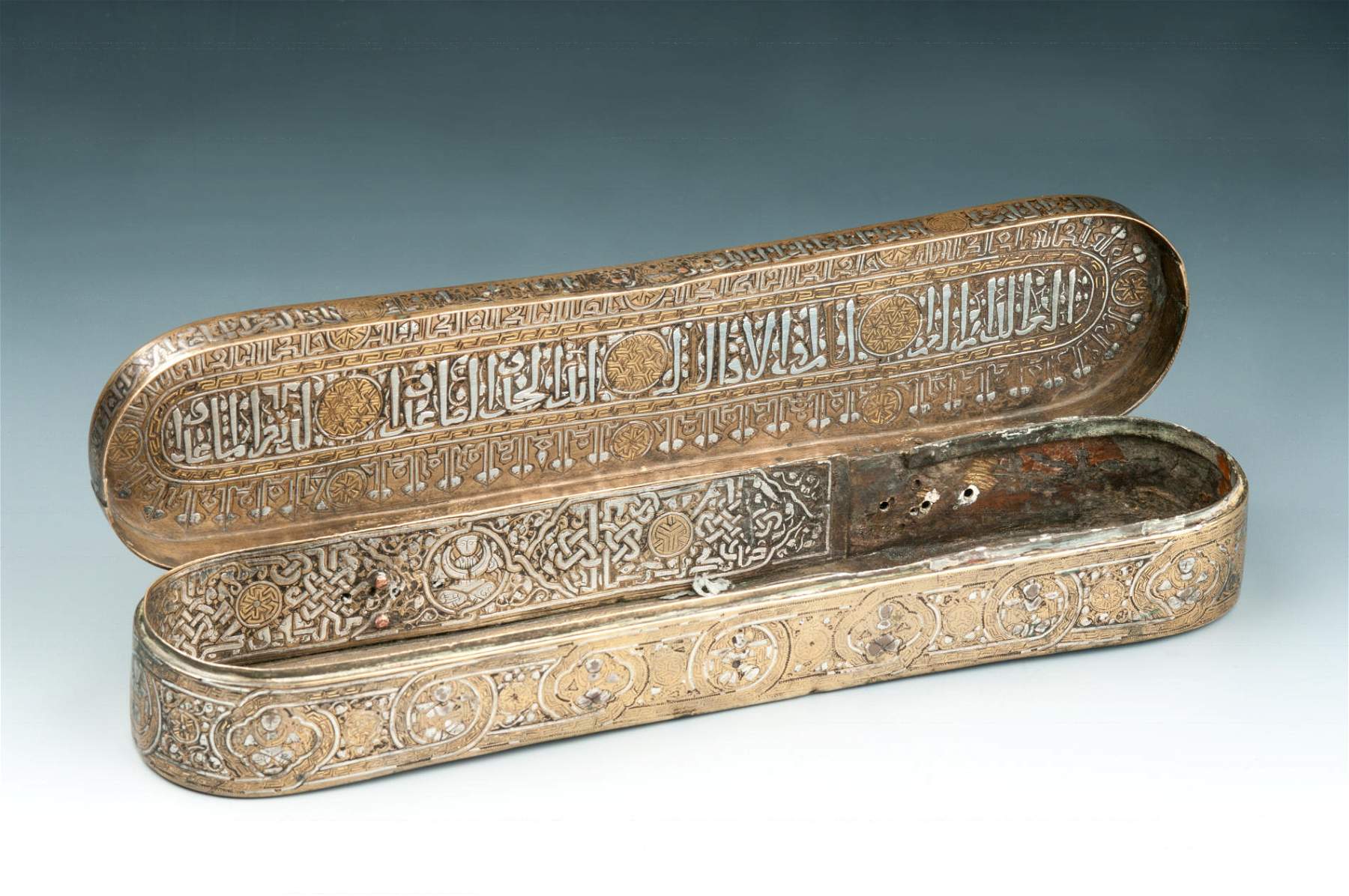Perfume burners, penholders, candlesticks, trays, basins, cups, and perfume bottles are some of the finest objects of Islamic metalwork on display within the exhibition Sovereign Metals. Feasting, Hunting and the Firmament in Medieval Islam, curated by Veronica Prestini, scheduled from June 16 to Sept. 17, 2023 at the MAO Museum of Oriental Art in Turin.
The exhibition, the second leg of the journey leading up to this fall’s major exhibition dedicated to the art of countries between the Far East and Central Asia to the shores of the Mediterranean, represents the first collaboration between the Museum of Oriental Art and The Aron Collection. Sovereign Metals, which succeeds Lustre and Luxury from Islamic Spain within the MAO’s Islamic gallery, presents a focused selection of the main types of objects of Islamic metalwork (perfume burners, penholders, candlesticks, trays, basins, cups, perfume bottles) that, together with the miniature, can be considered among the highest expressions of Islamic artistic creativity. A creativity that spread from Persia around the world like a language, reaching as far east as India and China and reaching as far west as the foothills of the Atlas Mountains. Fruit of admiration and imitation it reached Europe as well, showing how political and religious borders did not correspond at all to those of aesthetic perception.
What were the favorite subjects of artisans to decorate these precious metal objects? Undoubtedly that of hunting, and in particular the iconography of the king on horseback flanked by some animal (often a falcon or a cheetah) and a slave girl, who could be a scientist and musician artist. Astronomy, which, along with astrology, played a central role in the lives of rulers and influenced their political, military and even love choices, was a very common figurative theme with planets, constellations and zodiac signs, but also images related to predicting the future; finally, scenes of feasting and banquet, also linked to the literary genre known as Bazm-o-Razm, or “banquet and battle” indicating how the splendors of peace were cyclically contrasted with the ardor of fighting. In particular, astrology, with its scenes of court life, and the pageantry of royalty managed to escape Islamic iconoclasm in the Middle Ages, becoming the favored depictions even for objects destined for the burgeoning medieval Islamic bourgeoisie that, from the 10th century onward, populated the cities of the Caliphate.
Finally, this extraordinary and metaphysical repertoire is associated with the rigor of the calligraphic arts, used predominantly in objects intended for lighting, such as candlesticks and lamps, which are fundamental not only in daily and secular life, but also in the more sumptuous spiritual and sacred dimensions. Among the finest objects on display are a silver-encrusted penholder (Mosul, Iraq, late 13th century), which bears a depiction of the sun surrounded by planets, an iconographic motif typical of objects intended for rulers and other members of the elite as well as an emblem of astrological iconography in medieval Islam, and a large brass basin engraved and ageminized in silver (Fars, southern Iran, 14th century) with highly symbolic decoration: the cheetah, falcon, and bow hunting scenes that recur throughout the object’s surface were an expression of royal prerogative and, by referencing the ruler’s exceptional fighting qualities, legitimized his power.
As has been the case with other MAO exhibition projects, Sovereign Metals intends to build a dialogue between ancient and contemporary works, offering itself as a device for the study and investigation of cultures and materials. This time, within the exhibition itinerary, MAO is pleased to present the work Monochrome bleu (1959) by Yves Klein (1928-1962). Yves Klein’s artistic experimentation, which transformed color into art by enhancing the luminosity and intensity of ultramarine blue, somehow represents the fulfillment of a quest that has very ancient origins. Ultramarine blue can undoubtedly be considered as the most important of natural colors already known and used in painting in ancient times. The stylistic pursuit of the color absolutely involved even the Islamic miniaturists devoted to the illustration of manuscripts. Indeed, ultramarine blue, the so-called Persian blue, dominates in the highly prized miniatures and is often skillfully accompanied by the use of gold leaf. With this in mind, the work Monochrome Bleu will allow visitors to appreciate the evolution of technical, craft and artistic wisdom in continuous expressive tension, which has become a philosophical model in Klein’s interpretation, and be able to fully enjoy the disruptive depth of his color.
The exhibition Sovereign Metals will be an opportunity to show the public numerous objects currently held in the MAO’s storerooms, which will be juxtaposed and placed in dialogue with works from the Aron Collection and other important private collections.
 |
| Sovereign metals: metal art of medieval Islam on display at MAO in Turin. |
Warning: the translation into English of the original Italian article was created using automatic tools. We undertake to review all articles, but we do not guarantee the total absence of inaccuracies in the translation due to the program. You can find the original by clicking on the ITA button. If you find any mistake,please contact us.